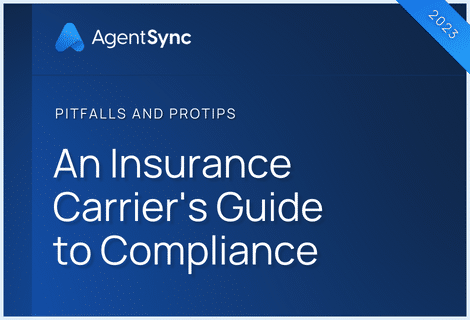

Pivot Toward Standardized Insurance Regulation
Most anyone who works in insurance across state boundaries can agree that the state-by-state regulation of the insurance industry makes things a little bonkers.
In fact, some people get so worked up about it that they found entire companies on the premise that it should be easier to grow while maintaining compliance with the myriad changing rules (*cough* Niji and Jenn *cough*).
Among this year’s various legislative shenanigans, though, have been several attempts to move a little closer together on some areas of insurance law, including the use and regulation of appointments.
You’ve probably read a bit about Kansas’s updates. But somewhat quieter have been the changes made to Texas legislation, which took effect in September. While, like Kansas, the changes affected a variety of insurance regulations, today we’ll zero in on the provisions regarding appointments.
State variations to appointments are cumbersome
State carrier appointments are one of the regulations that we’re passionate about because they vary so widely. Some states don’t require carriers to report them. Some states require carriers to proactively report them before an agent writes business. Some allow Just-In-Time (JIT) appointments. Many prohibit brokers from appointments… except when they’re required to have appointments.
Basically, for carriers transacting appointments across states, knowing when and whom to appoint can be a nightmare. Most states require carriers to appoint anyone downstream who might receive a commission check. But because of the state-to-state nuances, this often gets lost in the shuffle.
Texas’s HB 4030: What it does
According to the bulletin issued by the Texas Department of Insurance, the text of Texas House Bill 4030, which you can read in its entirety here, has several changes to the state’s insurance laws that are not exclusive to insurance carrier appointments.
- Producers have to have three credit hours in ethics continuing education every renewal cycle (this is comparable to most other states).
- The state has removed the following licenses and registrations:
- Life and health insurance counselor license
- Insurance service representative license
- Home office salaried employee registration
- Subagent designations
- Companies don’t have to register each branch location.
- New limits to the use of provisional licenses.
- Agents looking to relocate to Texas and requesting a Texas resident license for a comparable license in their previous state don’t have to submit a clearance letter.
- Nonresident public insurance adjusters don’t have to verify their familiarity with Texas laws.
Some of these changes seem to be related to technological developments. After all, why register each branch of an organization if that means tracking down hundreds of remote employees? Why issue a provisional license when technology has sped up the real licensing issuance process? Why ask for a clearance letter when you can instantly check a database for up-to-date license information?
Others, though, particularly in regard to insurance continuing education and the license, registration, and designation changes, seem geared toward conforming to other accepted insurance industry standards.
Conforming to NAIC best practices
The closest the insurance industry typically gets to standardization is usually to be had in the National Association of Insurance Commissioners (NAIC) model legislation, and appointments are no exception. The NAIC Producer Licensing Model Act is fairly neutral on appointments, including making Section 14 of the model, concerning appointments, optional.
For the giant nerds who read the discussion notes at the end of the NAIC’s models, you’ll find that the conversation around the purpose of appointments includes this tidbit:
“Appointments are required for three reasons: 1) generation of revenue; 2) to track who is working for whom; and 3) to create an additional review test for market conduct examiners.”
Texas’s July bulletin alerting people to the upcoming changes leans into the second reason. Now, if all you read was the aforementioned recap of the Texas act, you might be saying “it didn’t say a darn tootin’ anything about appointments,” and you’d be right. The key is in the somewhat unobtrusive change that abolished subagent designations.
The Texas Department of Insurance actually clarified in the bulletin that, by redlining subagent designations, they’ve made a substantial change to the status quo for appointments in the state:
“There is no longer a subagent designation under Insurance Code Chapter 4001. All agents must be appointed by an insurance company to engage in the business of insurance.”
So, prior to September, carriers could appoint an agent or agency and didn’t have to appoint anyone designated as a “subagent” under that entity. Now, however, Texas makes it clear: Anyone selling on behalf of a carrier must have an appointment, even if they’re a little downstream in the distribution pipeline.
Different approaches to implementing the appointment change
While Kansas and Texas both strove to implement appointment regulations more in keeping with the national model, their approaches to implementation have been very different. Kansas pre-emptively made all potential downstream producers into carrier appointments, which led to an end-of-year scramble for insurance carriers to terminate agents who don’t actually sell for them.
The Texas approach is the opposite. Instead of providing a list for carriers to X-out names that don’t belong, the Lone Star State will expect carriers to search out those agents who may receive commissions and who are selling downstream but until now had an arms-length relationship with the parent carrier.
For carriers and MGAs/MGUs that have been thrown for a loop, there is some good news:
- Texas has perpetual appointments, so once you’ve appointed an agent, you don’t have to fiddle with renewals, just terminations.
- Texas has JIT appointments, so you can wait to appoint until you have a verified sale coming in.
- AgentSync Manage makes managing appointments less labor-intensive.
This is likely not the last commentary we’ll have on Texas’s insurance changes, so stay tuned to the AgentSync blog for developments on this and other state regulations.
More importantly, if you’re interested in having your appointments streamlined across states like Texas, check out how AgentSync Manage can help.

